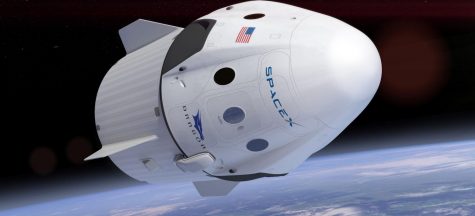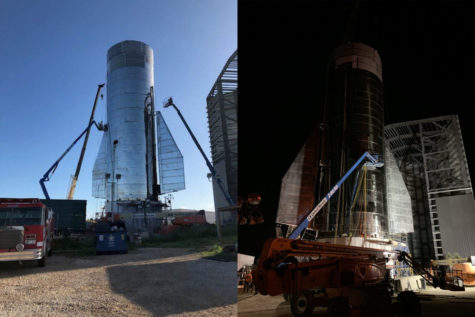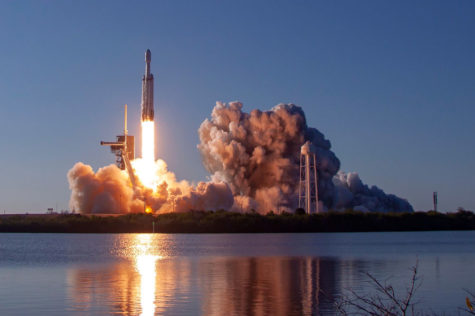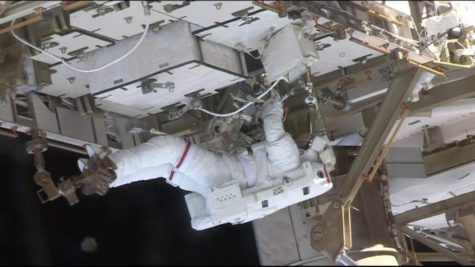The Falcon Heavy: Our Beckoning Future
February 16, 2018
Continuous advancements are being made each year in the space exploration industry, but this year, SpaceX takes the lead.
On Feb 6., the private aerospace manufacturing company SpaceX launched the Falcon Heavy, the most powerful rocket in use today, at 3:45 p.m. EST, at Cape Canaveral of the Kennedy Space Center in Florida.
The rocket launched with a critical success, making its way safely up into the distant skies. (Two engines landed back safely on their landing pads, but the third hit the water instead of the platform.)
The Falcon Heavy can carry up to 141,000 lbs. (64 metric tons) of payload into orbit, according to SpaceX’s website. And though it is the strongest rocket in use, it is not the tallest ever made — it stands at 229.6 feet while the Saturn V stands at 363 feet. It does, however, make up for its height in liftoff thrust, with a thrust of 5 million pounds. It is also surprisingly cheap, at $90 million per launch while the Saturn V cost $6.4 billion.
With each demonstration flight of a new rocket, typically the rocket would eject a heavy object into space like a large cinder block to simulate the mass of the spacecraft, but Elon Musk, the founder of SpaceX, thought that would be too boring. Elon Musk had his own Tesla Roadster sent up with the Falcon Heavy.
The Tesla Roadster was stored in the payload of the Falcon Heavy, and once outer orbit was reached, that payload was released, so the car is now traveling through space. “It’s kind of silly and fun, but I think silly, fun things are important,” Musk told USA Today.
Not only that, but the hot rod has a dummy driver, Starman, named after David Bowie’s song “Starman.” The dashboard is also engraved with the phrase “DON’T PANIC,” a reference to Musk’s favorite book, The Hitchhiker’s Guide to the Galaxy. The Starman could be seen sailing through space live until Feb 7, when the feed went dark. (It only had a 12-hour battery life.)
However, the Roadster will go a little off course; though it was meant to enter Mars’ orbit, it overshot and is now headed to the asteroid belt.
Musk said that although the Falcon Heavy isa big step toward colonizing Mars, which is the goal of SpaceX, the Falcon won’t be carrying any people. That’s why a new rocket design is already being worked on: the BFR.
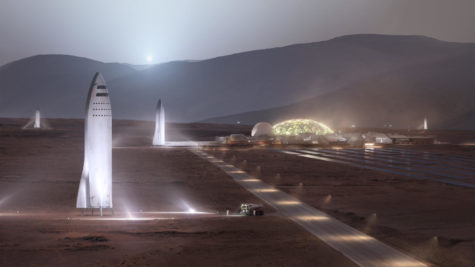
The SpaceX website confirms that the BFR, originally the “Big F—ing Rocket” but now the “Big Falcon Rocket,” will be more than 100 feet taller than the Falcon Heavy. At 347 feet, it will be able to support 150 tons of payload, will have enough room for over 100 passengers, and will be cheaper to launch than any other rocket ship.
The BFR will also be the first rocket to refuel in space. Tanker rockets will be launched into orbit, dock with the BFR, refuel the rocket, and land back down on Earth to refill with fuel again and repeat the process. That’s what makes the BFR so cheap: reusability. Musk shows the process himself in his “Making Life Multiplanetary” presentation at the International Astronautical Congress on Sept 29, 2017.
A short hopper test flight for the BFR may be as soon as 2019 while the earliest launch date for Mars for an unmanned flight is scheduled for 2022 at the earliest. The first manned flight for colonization of Mars is planned for 2024, our first step into becoming a multiplanetary species.
The future may be sooner than we expected.




